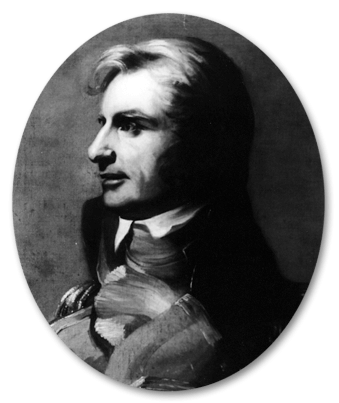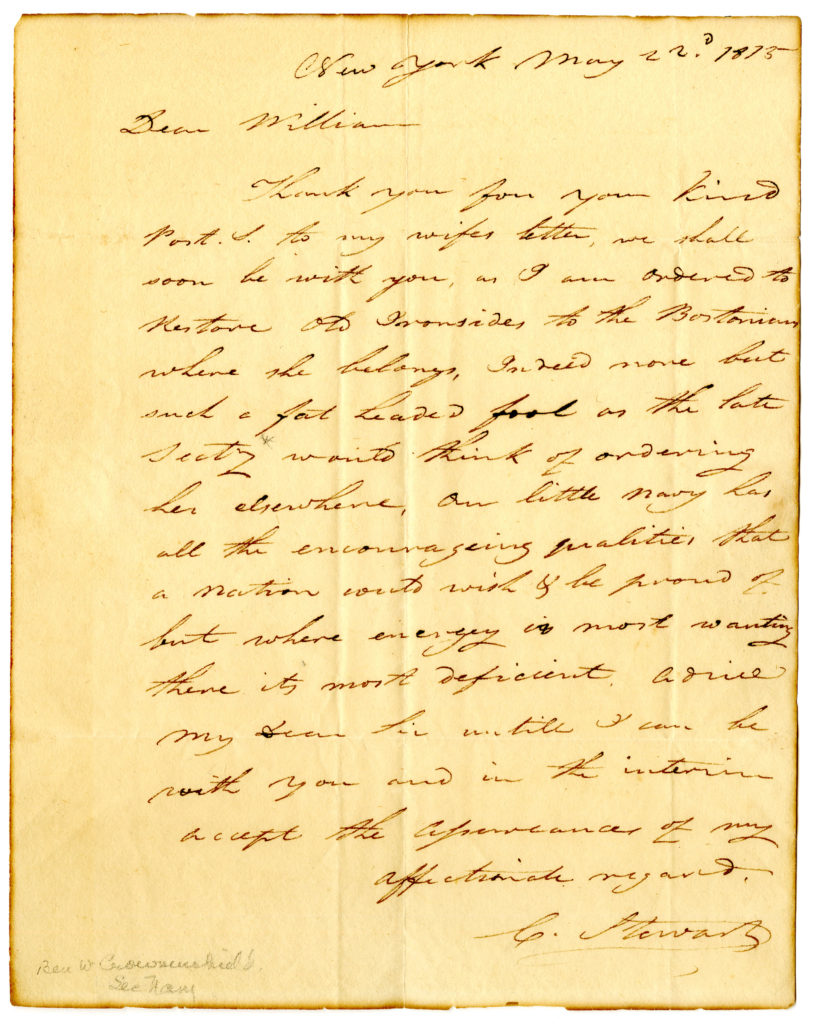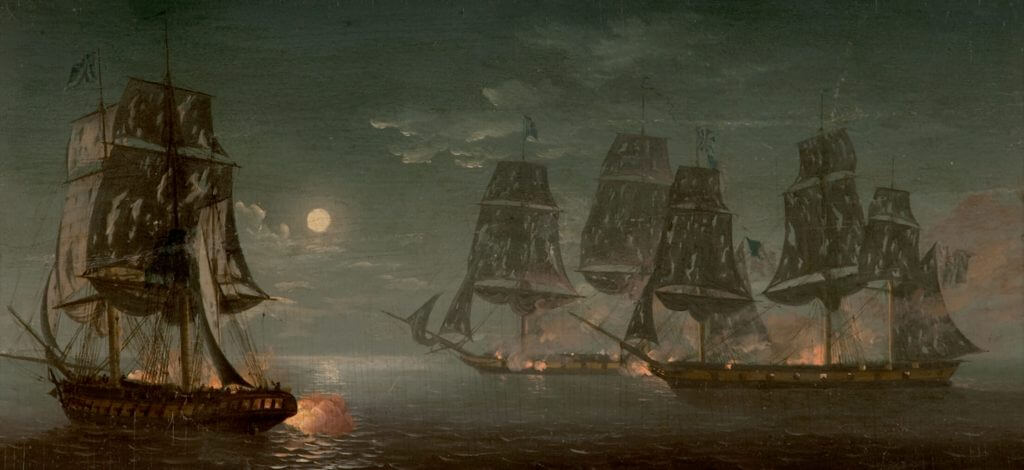Ship's Crew

Charles Stewart
Rank(s): Captain
Dates of Service: 7/18/1813 - 7/16/1815
Birth Date: 7/28/1778
Death Date: 11/6/1869
Charles Stewart was born in Philadelphia, Pennsylvania on July 28, 1778. He entered the merchant service at the age of 13, and became a master before joining the United States Navy in 1798 as a lieutenant. He first served aboard the frigate United States, then on the schooner Enterprise, and then aboard the frigate Constellation in the West Indies during the Quasi-War with France. He was first lieutenant on Constellation in the second Mediterranean Squadron sent to fight the Barbary corsairs, and later commanded the brig Syren. While in Syren, he oversaw the raid on Tripoli in February 1804, during which Stephen Decatur destroyed the captured American frigate Philadelphia in Tripoli Harbor. Promoted to master commandant in May 1804, Stewart remained active in the Mediterranean until the end of 1805. After returning to the U.S., he superintended the construction of gunboats through December 1807. He was promoted to captain in 1806. When the War of 1812 began, Stewart commanded the frigate Congress and then Constellation. In June 1813, he was ordered to Boston to command Constitution.
Repairing Constitution‘s damage from battle with HMS Java and recruiting a new crew went slowly, and it was December 1813 before Stewart got to sea. He returned to Boston in April 1814 after taking several small British merchantmen, but was trapped by an increasingly effective British blockade that kept him in harbor until mid-December. He was headed toward Madeira Island when he encountered two British men-of-war in the late afternoon of February 20, 1815. They were the light frigate Cyane and the corvette Levant, acting as a rearguard for a West Indies-bound convoy.
The British formed a line, and Stewart came up on their starboard side, opening fire at about 600 yards. When smoke obscured the ships, Stewart ceased fire. As it cleared, he saw Cyane trying to cross his stern. Throwing his sails aback, Stewart quickly closed on his opponent and opened fire, shattering the ship’s rigging. Meanwhile Levant tried to cross ahead. Stewart reset his sails, surged forward, and poured raking broadsides into the corvette’s stern, driving the helmsmen to cover. With Levant in shock, Stewart came about and approached Cyane‘s larboard quarter, while preparing to reopen the earlier firestorm. Before that could happen, Cyane surrendered. Stewart then set off to find Levant. Before long the pugnacious enemy reappeared, heading for Constitution. They passed and exchanged broadsides. Stewart turned sharply under the enemy’s stern for another rake. Levant surrendered as Constitution loomed up alongside.
Stewart repaired his prizes and continued his cruise. Eventually, a British squadron caught up with him and, though Stewart escaped with Cyane, Levant was recaptured. Constitution finally reached New York in mid-May, three months after the War of 1812 had ended. Congress awarded Stewart a gold medal and the crew shared $45,000 for their prizes.
After the War of 1812, Stewart commanded the Mediterranean, Pacific, and Home Squadrons, as well as the Philadelphia Station and Navy Yard. He also served as a commissioner of the navy. In 1837, he became the first and only captain of the ship-of-the-line USS Pennsylvania. Mounting 120 guns, she was the largest sailing warship in the U.S. Navy, but was soon thought too expensive to maintain and therefore laid up. In 1840, some considered Stewart a possible nominee for the presidency. By 1852, he was the service’s senior officer; he was officially ranked as “senior flag officer” in 1859. With the implementation of a new ranking system in 1862, Stewart was made the senior rear admiral on the retired list, and served as a consultant to President Abraham Lincoln during the American Civil War. Stewart died on November 6, 1869 and was interred in Philadelphia’s Woodlawn Cemetery. He had served for more than 71 years.
Stewart’s service has been subsequently recalled in the naming of two destroyers (1902 and 1920) and a destroyer escort (1943).

